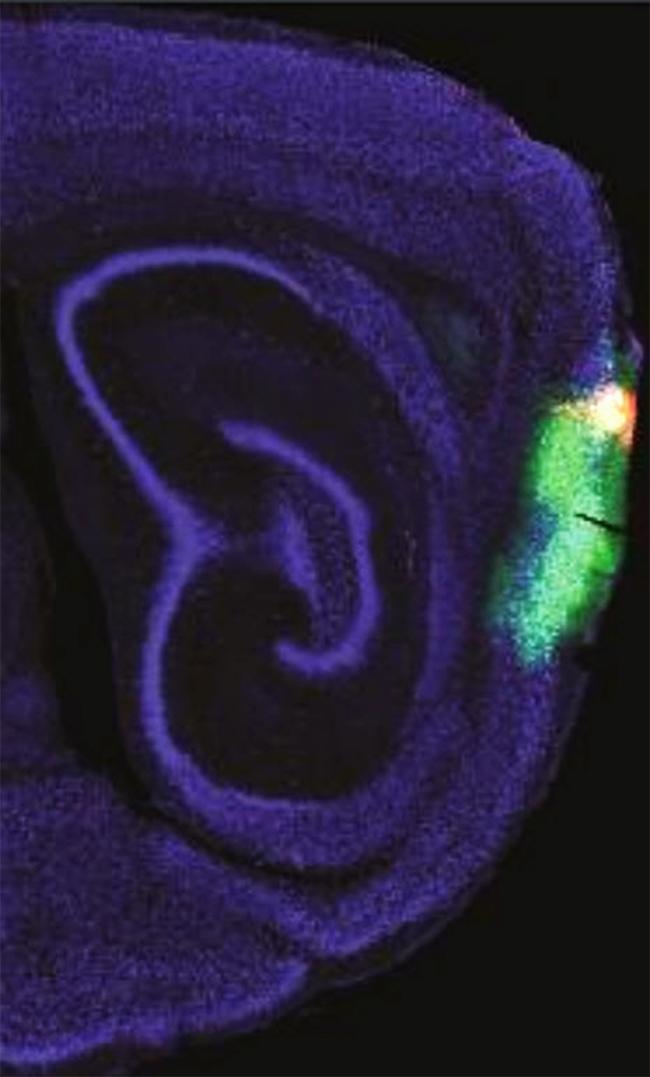How the brain keeps track of time
November 6, 2018
How the brain keeps track of time
At a Glance
- Researchers discovered a set of brain cells in the medial entorhinal cortex that keeps track of time in mice.
- The study suggests that there are separate brain circuits for recording information about time and place when forming memories.

When you remember an event, your brain records information about the time and place where it happened. Memories like these, which involve both space and time, are called episodic memories. Episodic memories can be lost with damage or disease to specific brain regions, as with Alzheimer’s disease—a condition in which memories of when and where experiences have happened can degrade over time.
Episodic memories are made in the medial temporal lobe. This brain area includes the hippocampus and medial entorhinal cortex. Brain cells (neurons) that record spatial information have been found in both brain regions. Neurons involved in tracking time have also been found in the hippocampus, but less is known about the role of the medial entorhinal cortex in time keeping.
To investigate whether brain cells in this brain region also help track time, a team led by Drs. James Heys and Daniel Dombeck at Northwestern University carried out a series of studies in mice. The research was supported in part by NIH’s National Institute of Mental Health (NIMH). Results were published in the November 2018 issue of Nature Neuroscience.
The researchers set up an experiment in which mice ran on a treadmill surrounded by a virtual reality screen. The mice saw a virtual track as they ran. Using a brain imaging technique, the researchers tracked neuron activity in the medial entorhinal cortex.
As the mice made their way through the track, they came upon an invisible door they couldn’t run past. If they did, they had to start the track over. To open the door, they had to wait at least 6 seconds without moving. If they moved before 6 seconds, they had to start the wait time over. Once the mice figured out how long to sit still to open the door, they could complete the track and receive their reward.
When the animals were running through the track, the specific set of cells responsible for recording spatial information were active. Once the mice stopped at the invisible door, those cells turned off and a different set of cells became active. These new cells appeared to keep track of how long the mice waited for the door to open. The ensemble of these timing cells predicted how long the mice waited in the trials.
When mice were given a different virtual track to run through, many of the same neurons responded to the same spatial or time components across the different tracks. This suggests that there are two separate sets of brain circuits in the medial entorhinal cortex that are specifically attuned to record either time or spatial information.
“Patients with Alzheimer’s disease notably forget when things happened in time,” Heys says. “Perhaps this is because they are losing some of the basic functions of the entorhinal cortex, which is one of the first brain regions affected by the disease.”
This finding might lead to new early-detection tests for Alzheimer’s, Dombeck adds. “We could start asking people to judge how much time has elapsed or ask them to navigate a virtual reality environment—essentially having a human do a ‘door stop’ task.”
—by Tianna Hicklin, Ph.D.
Related Links
- An Expanded Map of the Human Brain
- Mapping Brain Circuits Involved in Attention
- How the Brain Pays Attention to Faces and Places
- Storing Memories of Recent Events
- Mental Replay in Learning and Memory
- Tick Tock: Your Body Clocks: Understanding Your Daily Rhythms
- Do Memory Problems Always Mean Alzheimer's Disease?
- Basics of Alzheimer's Disease and Dementia
- Brain Basics


